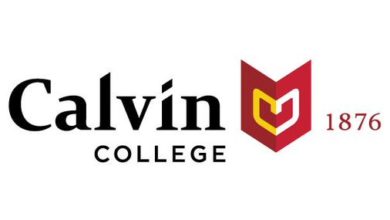Let’s dive into introducing the six (6) medical schools of Ontario Canada and their application requirements for the 2023 entry cycle.
Each of the Ontario medical schools uses the common application portal of OMSAS, and each school requires completion of the standardized OMSAS Autobiographic Sketch (ABS) and submission of References, or so-called ‘Confidential Assessment Forms’ (CAF).
However, that is where the commonalities of the Ontario schools end. Each of the programs has its own specific requirements for application aspects such as minimum GPA, pre-requisite courses, citizenship requirements, MCAT, CASPer, personal statements, special application streams, and interview types.
It may seem like a lot to process, but we’ve got you covered! The following is a summary of the pertinent application details for each school (listed in alphabetical order) l to help you organize your applications and identify which schools might be right for you!
1. Michael G. DeGroote School of Medicine (McMaster University)
McMaster University runs a three-year medical school program that has training 11-months a year and classes start in the second week of August. They admit a total of 203 students each year and run distributed classes on campuses in Hamilton (base site), Niagara (St. Catherines), and Waterloo.
Admission is based upon:
- Undergraduate coursework (almost any 3-4 program is accepted!)
- GPA (minimum considered GPA is 3.0/4.0)
- MCAT (the only requirement is a minimum CARS score of 123)
- CASPer (it was developed at McMaster after all!)
- 3 References
- ABS
- An MMI-type interview
It is noted that Ontario-based applicants receive preference over those from other provinces.
Special Applicant Streams: Indigenous, Black-Equity Stream, Canadian Military, MD/Ph.D.
Also, McMaster accepts applications from International trainees through their regular process.
2021 application statistics: 5,867 applicants for 203 positions (3.5% acceptance rate).
2. Northern Ontario School of Medicine (NOSM)
NOSM is Ontario’s newest medical school (founded in 2002) and recently attained the designation of ‘NOSM University, Canada’s first independent medical university! The overarching theme of most of NOSM’s application criteria for their 4-year program centers upon applicants that have some connection to remote life and/or work, especially in Northern Ontario, and those seeking to continue working as supportive physicians for this often disadvantaged population of the province, including indigenous and francophone community placements. They admit 64 students each year (only Canadian citizens or permanent residents), divided between the distributed sites of Sudbury and Thunder Bay.
Applicants under 25 years old must have completed a 4-year degree (nearly any program is considered), prior to admission, while those 25 years or older will be considered with at least a 3-year program in nearly any discipline. Applications are initially screened based upon:
- GPA (minimum considered GPA is 3.0/4.0)
- ABS
- NOSM-specific Supplementary Questions
- Context’.
Context criteria are spelled out in the online application but refer to the value the schools place on certain geographic and cultural aspects of the applicant’s background. Interviews (reportedly MMI-type) are offered to those that score highly on the three application segments listed above. The MCAT is not required.
Special Application Streams: Indigenous, Francophone, Canadian Military, those with Exceptional Circumstances.
2021 application statistics: 1,975 applicants for 64 positions (3.5% acceptance rate).
The University of Ottawa is located in Canada’s capital city and was the first medical school in North America to offer medical education in both of Canada’s official languages, English (120 students) and French (48 students). Only Canadian citizens or permanent residents are eligible for their 4-year training program.
Applicants are assessed based upon:
- GPA (minimum considered GPA is 3.0/4.0)
- CASPer
- ABS
- References/CAF
- Interview (traditional panel format)
- The MCAT is not required
Special Application Streams: Black Students, Canadian Military, MD/Ph.D., Indigenous (First Nations, Inuit, and Metis), Non-Ontario/Quebec Francophones, Nunavut-specific applicants, Low Socioeconomic Status (LSES) Initiative.
2021 application statistics: 4,394 applicants for 120 positions (3.5% acceptance rate).
Queen’s University is steeped in history as it was founded 150 years ago and is located in beautiful Kingston, on the shores of Lake Ontario. Approximately 100 students are accepted into their four-year training program each year within their modern medical training facility.
Admission criteria include:
- At least 3 years of full-time study in any program of study
- GPA (minimum considered GPA is 3.0/4.0)
- MCAT (undisclosed minimum required scores are determined each year)
- CASPer
- References
- ABS
- Both MMI (primary) and panel interview (secondary) formats (all interviews conducted virtually).
Special Application Streams: Indigenous, Canadian Military, MD/Ph.D., MD/MSc.
2021 application statistics: 5,781 applicants for 100 positions (2% acceptance rate).
5. Schulich School of Medicine & Dentistry (Western University)
The Schulich medical program at Western University runs a distributed 4-year program (133 students at the London (main) campus, and 38 students at the Windsor campus). London is a mid-sized city that embodies the ‘University Town’ ideal, while Windsor is located about 200km southwest and shares an international border with Detroit.
Admission is based on a combination of:
- Degree requirements (must have completed a 4-year-degree program by the time of medical school commencement),
- GPA (Schulich has specific calculation options for GPA, but they do not publish the minimum GPA required for consideration)
- MCAT (all sections may be considered).
Non-academic requirements include CAFs and a so-called Western Abbreviated Autobiographical Sketch (AABS). Interviews involve a 3-person panel and are standardized and set at 45 minutes.
Special Application Streams: Southwestern Ontario Pathway (i.e. Ontario applicants with a connection to SW Ontario), Indigenous, Access Pathway (for those that have dealt with challenges of medical, socio-cultural, financial, or underrepresented ethnicity), Canadian Military, MD/Ph.D., or MD + other postgraduate training options. Additionally, Schulich has a maximum of three (3) positions for International applicants.
2021 application statistics: 2,752 applicants for 171 positions (7% acceptance rate).
Last, but definitely not least, is the historic and world-renowned medical school at the University of Toronto (U of T). The U of T medical school is the oldest in Ontario and was founded in 1843. Based in Ontario’s largest and capital city, Toronto is home to a diverse population and the health campuses offer exposure to world-class physicians and researchers. The U of T medical program is distributed between the St. George campus (U of T main campus) with 205 students, and 54 students based at their U of T Mississauga campus about 30 minutes away.
Admission criteria include:
- GPA (the minimum considered GPA is 3.6/4.0, though they suggest a competitive GPA will be closer to 3.8/4.0),
- MCAT (only meeting the minimum score of 125 in one section, with one section of 124 is required. Overall MCAT scores are not used competitively!)
- ABS (including an additional ABS statement)
- References
- U of T specific Brief Personal Essays.
Past interviews have employed a Modified Personal Interview format with multiple short interviews in sequence (non-MMI format).
Special Application Streams: Black Students, Indigenous Students, MD/Ph.D., Canadian Military. Also, U of T accepts International applicants and requires they meet the same minimum requirements as Canadian applicants.
2021 application statistics: 4,319 applicants for 259 positions (6% acceptance rate).
To summarize, Ontario offers a group of medical schools that all offer high-quality training programs that attract many more applicants than they can train each year. In 2021 there were 25,496 individual school applications from a total of 7,102 applicants. When we consider there were 965 medical student positions that year, the acceptance rate per applicant is 13.5% or 1 in 7.5. You can beat the odds through excellent preparation and expert support to create a high-quality application and exemplary interview skills when your time comes!
[ Also Read: How to Navigate the Ontario Medical School Application Process ]
This summarized information is for reference purposes only, refer to the OMSAS website and each school’s admission criteria for detailed instructions and requirements that are not captured in this article.



